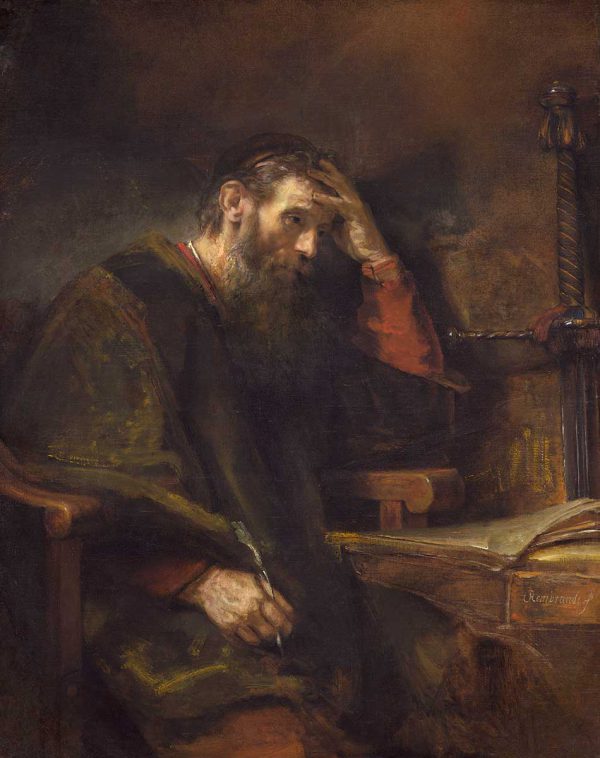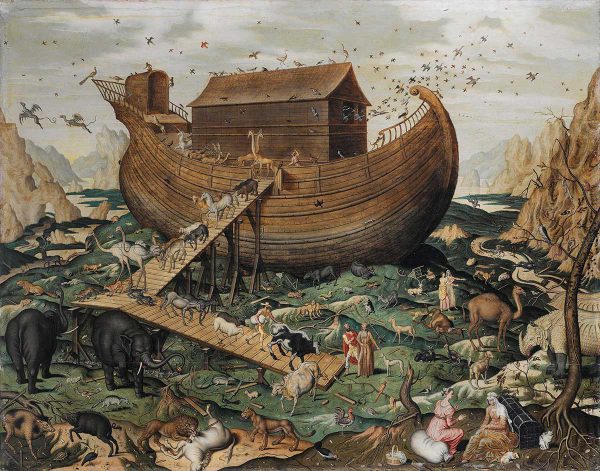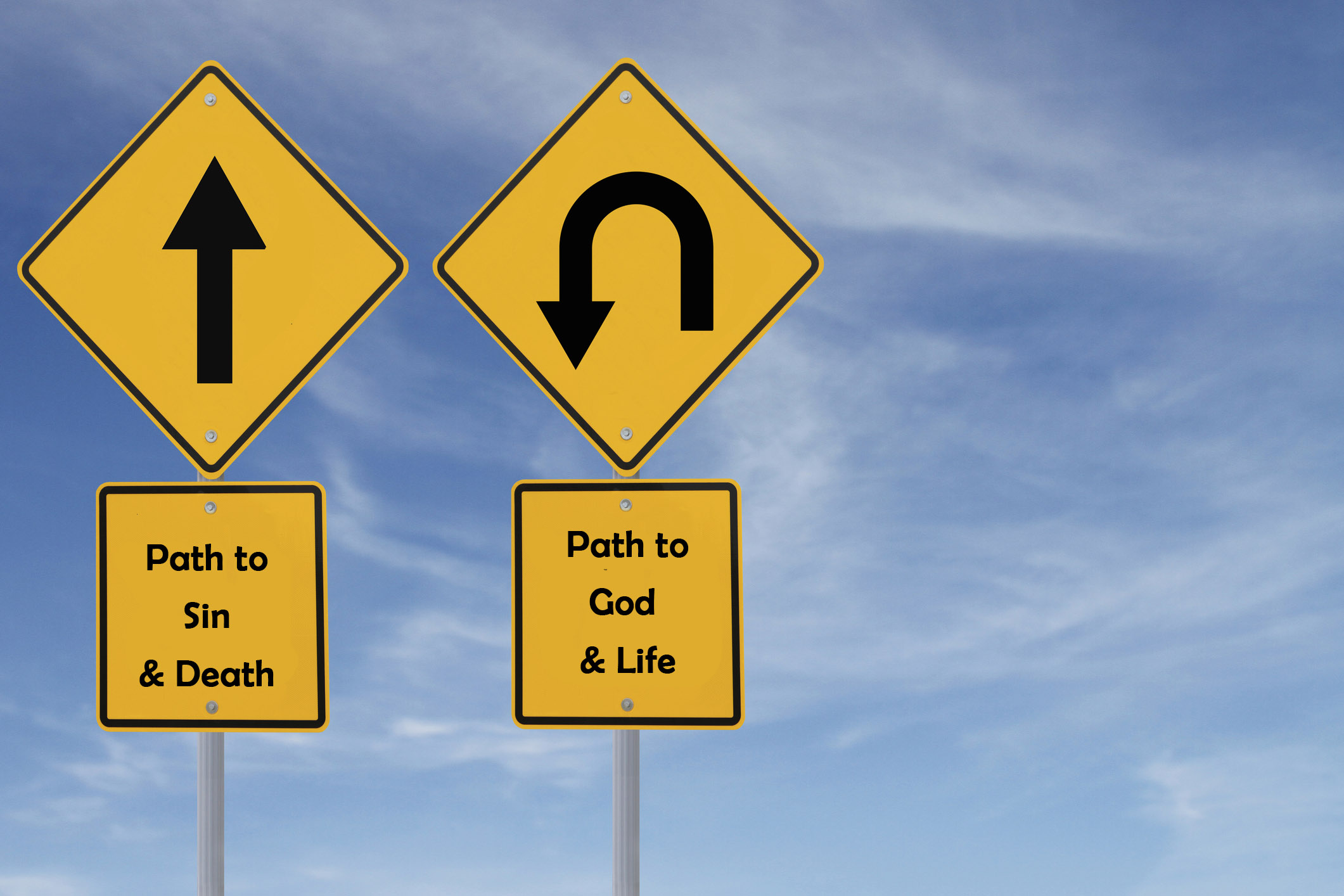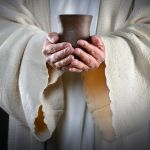
The Exhortation to the Apostles, by James Tissot
The early Jewish followers of Yeshua (Jesus) did not start a new religion called Christianity.
They were simply Jews who were following a rabbi named Yeshua. And as the number of followers grew, a new branch of Judaism formed, which they called The Way. (Acts 9:2, 19:9, 23)
Their faith in Yeshua as the Messiah was the ultimate fulfillment of their religious and spiritual expectation of Judaism.
They continued to worship in the Temple courtyard in Jerusalem, attend synagogue services wherever they lived, and observe the appointed times (Jewish festivals) commanded in the Torah. (Acts 20:16)
The disciples were Jews.
There was no such thing as Christianity or the Gentile church culture that we know today — whether we think of Catholicism, Orthodox, Evangelical, or any other form of Christianity — it simply did not yet exist!
During the time of Yeshua, Israel was ruled by the Romans, and they viewed The Way to be a sect of Judaism, no different than the Sadducees, Pharisees, Essenes, the Jewish community at Qumran, or the secular people — they were all Jews!
Nor did the Sanhedrin (the religious court in Jerusalem, which included the High Priest), think that Yeshua or His disciples were starting a new religion. They just viewed Yeshua as a lone-ranger rabbi (teacher) who blasphemed. (John 10:36)

Stephen, a disciple of Yeshua, gets stoned for his faith as Paul looks on, guarding the clothes of those stoning him in Acts 7:58, 22:20. (Illustration: The Stoning of Stephen, by Luigi Garzi, 1638–1721)
Sha’ul Persecutes The Way Before Joining The Way
The rabbi and Pharisee named Sha’ul (who was later known by His Greek name Paulos or Paul in English), eagerly watched Yeshua’s disciples being stoned to death and imprisoned.

The “Conversion” of Paul (1765), by Nicolas Bernard Lépicié, depicts Sha’ul being thrown of his horse as he encounters the blinding light of Yeshua. (Acts 22:6–21)
He obtained permission letters from the high priest Caiaphas to arrest members of The Way in the synagogues of Damascus, Syria.
“I persecuted some of The Way to the death, binding and putting both men and women into prisons,” he confessed. (Acts 22:4)
But God had other plans for this rabbi’s zeal.
On the way to Damascus with thoughts of murder on his mind, a brilliant light beamed down from heaven, flashing all around Sha’ul, blinding him! (Acts 9:1–9)
“He [Sha’ul] fell to the ground and heard a voice saying to him, ‘Sha’ul, Sha’ul, why are you persecuting Me?’ And he asked, ‘Who are You, Lord?’ And He said, ‘I am Yeshua whom you are persecuting, but get up and enter the city, and it will be told you what you must do.’” (Acts 9:4–6)
Sha’ul had studied the laws of the Torah under one of the best teachers of Judaism, such as Rabbi Gamaliel, who is still highly respected to this day.

In Aramaic translations of the Hebrew Scriptures, appearances of God are often said to be His Word (Memra in Aramaic), such as the cloud that remained over the Tent of Meeting: “. . . the glorious Cloud descended and stood at the door of the tabernacle; and the Word of the Lord spoke with Moshe.” (Deuteronomy 4:33, Targum Palestine)
But now he had to relearn what God had been saying throughout Scripture about His ways and His Messiah.
Sha’ul (Paul) had to understand who Yeshua was, the One who said,
“I am the way, the truth, and the life; no one comes to the Father but through Me.” (John 14:6)

The Apostle Paul (c. 1657), by Rembrandt
Paul also had to learn what the other Apostles who lived with Yeshua understood. For example, John taught that in the beginning was the Word of God, who was with God, and this Word became flesh. Yeshua and God were one. (John 1:1–14)
So, after personally encountering the divine brilliance of the Living Word, Sha’ul (Paul) did not immediately go to Jerusalem to begin ministering with the other apostles of The Way, whom Yeshua had appointed.
Instead, he spent three years in Arabia and Damascus. (Galatians 1:17)
What Is the Way?
The Hebrew word derek (דֶּרֶךְ) and the Greek word hodos (ὁδός) often translate into the English words: way, path, road, and journey.
In Scripture, these words sometimes literally describes a road or physical journey and sometimes they figuratively describe a person’s way of life.
The Way to a Restored Relationship with God
After the sin of Adam and Eve’s disobedience in the Garden of Eden, they were punished and could no longer enjoy immortal life. Mankind was now doomed to physical and spiritual death.
However, God introduced another way to live forever with Him.
Right in the beginning of the Bible, He gave a promise that a descendant (the seed) of Eve would crush the head of the serpent — Satan. (Genesis 3:15)
And mankind sorely needed such a Messiah! It was only another three chapters later that sin had spread so far that murder and mayhem filled the land.
God planned to destroy the evil in the earth with a flood. He told Noah to build an ark, which would save him, his family, and a variety of living creatures to repopulate the earth.

Noah’s ark on the Mount Ararat (1570), by Simon de Myle
The Way of the Lord
“God looked on the earth, and behold, it was corrupt; for all flesh had corrupted their way upon the earth.” (Genesis 6:12)
Because of this pervasive corruption, God repopulated the earth after sending a great flood to destroy all living creatures, except Noah and those on the ark he built. God then chose a people to specifically follow His way and no one else’s way.
He called out a Gentile man named Abraham and said, “I have chosen him, so that he may command his children and his household after him to keep the way of the Lord by doing righteousness and justice.” (Genesis 18:19)

God shows Abraham the Stars, by Julius Schnorr von Carolsfeld
He later gave the Israelites a code of laws in the Torah and a commission: “You will be for Me a kingdom of priests and a holy nation.” (Exodus 19:6)
The way of Israel was to be the way of holiness, a light to the nations. But many of them navigated their way to worship other gods. The Lord spoke to Moses, saying,
“They have quickly turned aside from the way which I commanded them. They have made for themselves a molten calf, and have worshiped it and have sacrificed to it and said, ‘This is your god, O Israel, who brought you up from the land of Egypt.’” (Exodus 32:7–8)
Again, God wanted to destroy them all, but Moses interceded.
Throughout Israel’s history, God had to speak through the prophets to remind the people of His way: Obedience, righteousness, holiness, justice, peace, perfection, truth, the fear of God, and uprightness (Deuteronomy 32:4; Isaiah 58:8, 64:5; Hosea 10:13; Ezekiel 18:24; Psalm 18:30)
The one who walks in God’s ways fears Him (Psalm 128:1) and “rejoices in doing righteousness.” (Isaiah 64:5)

A fresco of King David dancing before the Ark by Johann Baptist Wenzel
Preparing the Way of the Lord
But, of course, no one could fulfill these high standards perfectly — not Moses, not David, not even Rabbi Sha’ul, who said he was a Pharisee of Pharisees.
This is why God had been preparing the people for a coming Messiah. Someone who would take them off Satan’s road to death and place them back on His road to life. Part of that preparation included a messenger:
“I will send My messenger ahead of you, who will prepare Your Way — a voice of one calling in the wilderness, ‘Prepare the Way for the Lord, make straight paths for Him.’” (Malachi 3:1; Isaiah 40:3; Mark 1:2)
This preparation involved repentance!

Yochanan the Immerser Sees Yeshua from Afar, by James Tissot
Repentance is what all the prophets continuously called Israel to do, including John the Immerser, who “appeared in the wilderness, preaching a mikvah (baptism) of repentance for the forgiveness of sins.
“The whole Judean countryside and all the people of Jerusalem went out to him. Confessing their sins, they were immersed by him in the Jordan River.” (Mark 1:5)
And this is part of our own commission as well: “that repentance for forgiveness of sins would be proclaimed in His name to all the nations, beginning from Jerusalem.” (Luke 24:46; also Mark 6:11-13)

The Way of Salvation
Repentance has always been part of God’s plan of salvation along with the sacrifice of unblemished lambs, goats, and bulls to temporarily cover sin.
Yeshua gave us a “new and living way” to restore our relationship with God permanently — by His perfect unblemished blood. (Hebrews 10:19–20; see also Isaiah 53)
During the three years in Arabia, Sha’ul (Paul) searched the Hebrew Scriptures, and came to the conclusion that accepting the sacrificial blood of Yeshua to cover his own sins was the only way to eternal salvation.
And that is what Paul preached as a full-fledged member of the Way.

Paul Preaching in Athens (1515), by Raphael
What Happened to the Way?
By the time the last Jewish apostle, Yochanan (John), died around AD 99, many Gentile leaders of the “Christian” faith who were Greeks and Romans harbored some hostility toward the Jewish people because they had advocated that Yeshua (Jesus) be put to death.
That Gentile hostility gave rise to Jews being forcefully prohibited from maintaining their Jewish customs, some of which were actually commands of God.
By the 4th century AD, Constantine made Christianity the official religion of his empire and deemed it illegal for followers of Yeshua to celebrate the Jewish feasts, including Passover which commemorates the very day of Yeshua’s sacrifice.
Instead, he officially instituted Easter as an obligatory holy day, separate and apart from Passover.
Today, it is rare to find Christians who truly understand how the Hebrew Festivals and Scriptures, such as Passover, are connected to Yeshua’s death.
This is a sad reality, since the Passover is a fulfillment of Isaiah 53, a key Messianic prophecy designed by God and central to understanding His plan of redemption.

Children hunt for Easter eggs.
Most of the Jewish traditions that Yeshua and His apostles practiced have been replaced with foreign “Christian” traditions and doctrines. Today, there are thousands of Christian denominations in the world.
Just as Sha’ul (Paul) had to discard his ways of understanding Messiah in light of Judaism, Christians today also need to relearn what they have been taught.
You can help both Jews and Gentiles relearn what they have been taught by supporting our ministry today.







